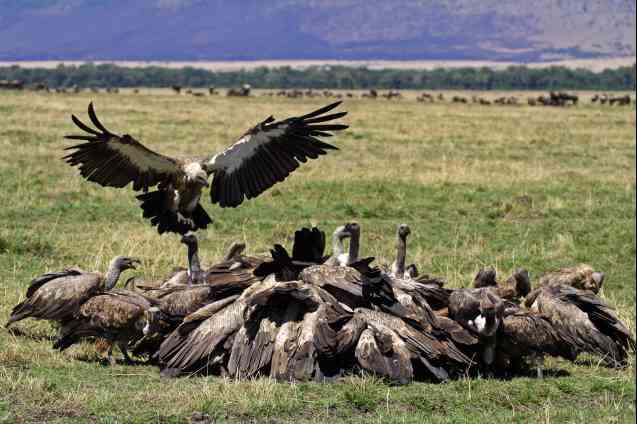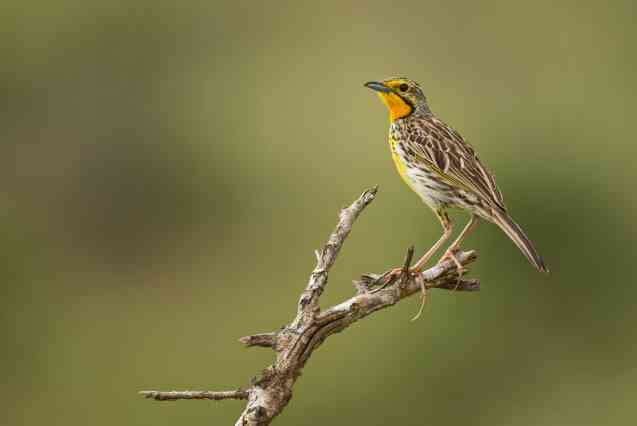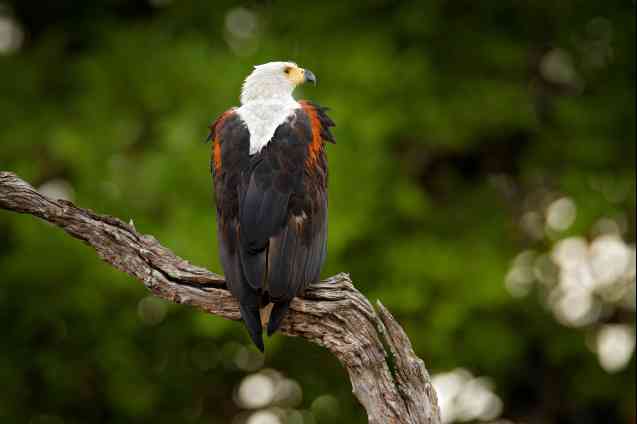The Best Places to See the Birds of Kenya (Birding Safari Guide)
Kenya is one of Africa’s safari hot spots. Classic safari landscapes teeming with iconic safari wildlife, majestic mountains, and accessible tropical beaches make Kenya a perfect safari getaway. We all know about Amboseli, the Masai Mara, and Samburu Big 5 safaris but what about a Kenya birding safari?
 Bataleur eagle, bird safari Kenya
Bataleur eagle, bird safari Kenya
Why Birding in Kenya?
Kenya is one of only 15 countries in the world that boasts over 1,000 bird species. In fact, Kenya has 1,154 recorded species and is second in Africa only to the inaccessible Democratic Republic of Congo and Tanzania.
The reason for the great diversity of bird species in Kenya is the varied geographical range. Rising from sea level to over 1,500 meters (about 4,921ft) before descending into the Great Rift Valley, Kenya’s geographical variations result in a variety of landscapes and climates. These diverse biomes include the open savannah grasslands of the Masai Mara, the coastal forests of Arabuko-Sokoke, mangroves, wetland areas, and lakes as well as the mountain habitats of Mt. Kenya and more arid desert scrub to the north in Samburu and around Lake Turkana.
Kenya can be described as a mosaic of varied habitats. These bountiful biomes mean an abundance of food that can support a huge number of avifauna (birds). While over 1,100 species have been counted in Kenya, these include resident species, endemic birds as well as seasonal migratory species.
 Vultures Masai Mara, Kenya birds
Vultures Masai Mara, Kenya birds
Kenya’s migratory bird species |
|---|
| Kenya’s migratory bird species fit into two categories; the Palearctic migrants and the intra-Africa migrants. Palearctic migrant birds visit Kenya from Europe and Asia every year. Intra-African migrants are birds that migrate within the African continent. Both sets of migrant birds visit Kenya from about November to April. |
Of the more than 1,100 birds that you can see in Kenya, 11 are endemic, 800 plus are year-round residents, around 170 are Euro-Asiatic migrants and roughly 60 are intra-African migrants. The endemic and near-endemic species are especially sought after and can usually be found with a little luck. The Palearctic migrants arrive around September and stay until April. It's no wonder then that Kenya is one of the best birding destinations in the world.
 Kenya big 5 birding, African ox-pecker
Kenya big 5 birding, African ox-pecker
The only drawback to birding in Kenya is the abundant megafauna that one must work around to see the birds. Elephants, lions, giraffes, foxes, servals, eland, buffalo, and a host of other African safari animals can prove to be a real distraction.
Kenya Birds Big Day |
|---|
| Kenya holds 3rd place globally for the number of species seen in a single day. Known in the birding world as “a big day” and guided by a special set of rules, teams of birders set out to count as many birds as possible in a 24-hour period. Kenya held the world record 'bird watch' from 1986 until 2014 - with 342 species seen in 24 hours! |
The Best Places to See the Birds of Kenya
Kenya is an incredible birding destination, and any safari will be well rewarded with an abundance of birdlife. However, there are a few Kenyan bird-watching destinations that stand out.
Arabuko-Sokoke National Park
 Forest elephant Arabuko Sokoke Forest Kenya safari
Forest elephant Arabuko Sokoke Forest Kenya safari
Arabuko-Sokoke National Park could very well be Kenya’s best-kept secret. Thriving quietly in the shadow of Kenya’s heavyweights, Arabuko-Sokoke is the largest surviving slice of coastal forest in East Africa. About 100km (or 62 mi) north of Mombasa, this tiny 6 km² (about twice the area of Central Park in New York City) National Park is not only a birder's paradise but a naturalist's wonderland. For birders, Arabuko-Sokoke National Park is Kenya’s must-visit bucket-list destination. Arabuko-Sokoke National Park has no less than 6 endangered bird species, two of which are locally endemic and found nowhere else in the world. The highly localized Sokoke scops owl and the mysterious Clarke’s weaver can both be found in the park. Add to this the globally threatened amani sunbirds, spotted ground thrush, Sokoke pipits, and East coast akalats and the challenging forest birding is well worth the effort.
In total, Arabuko-Sokoke National Park is home to over 230 bird species, as well as caracal, African civet, various duiker, two species of bushbaby, red-legged and red-bellied sun squirrel, aardvark, Syke’s monkey, golden baboon, the occasional leopard, and several incredible butterflies. The park's flagship species, however, is the rare golden-rumped sengi. 90% of these endearing, brightly coloured elephant shrews' known population is found within the Arabuko-Sokoke forest.
What Kind of Bird Watcher are you? |
|---|
|
Just like birds, birdwatchers can be tricky to classify. And mislabeling one can be perilous. I have referred broadly to birders, but what kind of birder are you? Generally speaking, it comes down to levels of enthusiasm and dedication.
|
Tsavo East and the Taita Hills
Located in southern Kenya, Tsavo East and West are famous for man-eating lions and red elephants. Tsavo East and Tsavo West, together, make up the largest National Park in Kenya. Taita Hills is a private wildlife sanctuary on the eastern edge of Tsavo West. Located in an important ecological corridor, Taita Hills covers over 28,000 acres (about the area of Manhattan) of riverine forest, savanna wood, and grassland.
Tsavo East is a birding mecca. With over 500 Kenya bird species including dry country specials like the Somali ostrich, vulturine guinea fowl, and golden-breasted starling as well as a host of migrants. The park attracts birders from around the world. Named after the surrounding cluster of hills, Taita Hills boasts a high level of endemism and is considered a biodiversity hotspot. With over 350 recorded bird species including straw-tailed whydah, sombre nightjars, taveta golden weaver, and singing bush larks it is already a birder’s paradise. However, the presence of three endemic species, the Taita thrush, Taita Apalis, and Taita white eye make this a birder’s bucket-list gold.
The combination of the Taita Hills Wildlife Sanctuary and Tsavo East, diverse habitats, big game, spectacular scenery, and endangered species, make this an exciting addition for any birder.
What Is a bird-watching ‘lifer’? |
|---|
| A ‘lifer’ is a term used by birdwatchers to describe a bird species that they have seen and positively identified for the first time. A bird can only be a ‘lifer’ at the first sighting and many birders fondly recall memories of their favourite ‘lifers’. |
 Kakamega forest weaver, birds of Kenya
Kakamega forest weaver, birds of Kenya
Kakamega Forest
Kakamega Forest is the last remnant of the ancient Guineo-Congo rainforest that once spanned the continent. Located in the Lake Victoria catchment, about 40km north of Kisumu, the Kakamega Forest is home to impressive wildlife from monkeys to giant otter shrews and leopards. Kakamega’s avifauna is particularly impressive with many rare species. Several species have isolated populations including Ansorge's greenbul, blue-headed bee-eater, Chapin's flycatcher, Turner's eremomela, and the yellow-bellied wattle-eye. There are at least 16 bird species that do not occur outside of Kakagema and a further 30 are believed to be confined to this area.
Owing to these rare localized species, the pristine forest, and wide trails, Kakagema Forest has become a mecca for birdwatchers from around the world.
What are Kenya's endemic species? |
|---|
| An endemic species is any species that is found only in that area. Kenya has a few endemic bird species that are found nowhere else in the world. Kenya’s endemic species are the Tara River cisticola, Jackson’s Francolin, Aberdare cisticola, Hinde's pied-babbler, William's lark, Sharpe's longclaw, and Clarke's weaver. |
Mount Kenya and the Aberdare National Park
Mt. Kenya and the Aberdare National Park are both excellent birdwatching destinations. Mountain peaks, lush forests, moorland, and abundant water create a habitat for abundant birdlife. The scenery alone makes birding in these locations spectacular. Mount Kenya is home to the violet-backed starling, green pigeon, and Meyer’s parrot. The two rarities that bring birders from around the globe, however, are the olive Ibis and Abbott’s starling. These rare secretive forest birds can be reliably located in Mount Kenya National Park.
 Broad-ringed white eye, Aberdare National Park, Kenya
Broad-ringed white eye, Aberdare National Park, Kenya
Aberdare National Park is where Princess Elizabeth received the news that her father, King George VI had passed away in 1952. Located in central Kenya, west of Mt. Kenya, the Aberdare is an elevated alpine moorland punctuated by gorge and forest. Offering spectacular mountain views, the Aberdare National Park is a birder’s paradise. With more than 290 recorded species, keep your eye peeled for Hartlaub’s turaco, bar-tailed trogon, and the Abyssinian ground thrush. The Aberdare is also home to two endemic birds, the Aberdare cisticola and Jackson’s francolin. There are also several interesting sunbirds including the rare scarlet-tufted malachite sunbird which can be found at higher altitudes on the mountain peaks.
 Flamingos Lake Nakuru, birds of Kenya
Flamingos Lake Nakuru, birds of Kenya
What is a RAMSAR site? |
|---|
| A RAMSAR site is a designated wetland site of international importance. The Ramsar Convention, also known as "The Convention on Wetlands", is an intergovernmental environmental treaty established in 1971 by UNESCO and was adopted in 1975. |
Kenya Birding Lakes
Kenya has an embarrassment of riches when it comes to lakes and wetlands. Kenya has 6 RAMSAR sites, 5 of which are lakes in the Great Rift Valley; Lake Nakuru, Bogoria, Baringo, Elementaita, and Naivasha are all on the safari circuit as people flock to their shores to witness the masses of pink flamingos that gather from November to April. While flamingos are the main attraction for some, wetlands are of special interest for birders. Here is a list of our best birding lakes in Kenya.
Lake Baringo Birding
A birding haven that never fails to impress, Lake Baringo has four excellent birding sites to explore, Lake Baringo Club, Robert’s Camp Compound, Lake Baringo Trachyte Cliffs, and the West Bay. Visitors can easily spot 120 (of the 480 species on its recorded list) species in a 12-hour period. Some of the birding highlights include African spoonbills, African scops owls, slender nightjars, brown babblers, and even Verreaux’s eagle.
 White rhino Lake Baringo Kenya safari
White rhino Lake Baringo Kenya safari
Birding Lake Bogoria
One of the Rift Valley’s alkaline lakes, Lake Bogoria is home to one of the largest aggregations of lesser flamingos in Kenya. Protected since 1973, this 107km² (about 66 mi) National Reserve is a great day trip from Lake Baringo. The spectacular scenery dotted with springs and geysers is also home to little grebe, tawny eagle, pratincole, swift, little bee-eater, Cape-wigeon, Gabar goshawk, water dikkop, and hornbill as well as kudu, warthogs, zebras, baboons and many other small mammals.
Lake Nakuru Birding
Lake Nakuru National Park is a birdwatching paradise. Hiking, picnics, and game drives can reveal picturesque waterscapes dotted with great white pelicans, great cormorants, African spoonbills, and African fish eagles. While looking for Narina trogons, red-throated wrynecks, greater Honeyguides, and African fire finches keep a look out for other wildlife including white rhino, Rothschild’s giraffe, buffalos, and deffasa waterbuck. Leopards are also known to lounge in the acacia trees during the day.
 White rhino and pelicans, Lake Nakuru
White rhino and pelicans, Lake Nakuru
Lake Naivasha Birding
The freshwater of Lake Naivasha supports a huge variety of aquatic birds. The lake has an extremely high density of African fish eagles and in addition to the 80-odd regular residents, Naivasha is visited by an assortment of Palearctic waders, and ducks. Globally threatened species include Basra reed warblers, lesser flamingos, grey-crested helmeted-shrike, and little grebes.
 Long-crested eagle, Masai Mara safari Kenya
Long-crested eagle, Masai Mara safari Kenya
The Masai Mara: Big 5 and Birding
The Masai Mara National Reserve is Kenya’s premier safari destination. The great migration months from July to October are incredible and a once-in-a-lifetime safari adventure. However, game viewing in the Masai Mara is excellent all year round and, from November to April, both Palearctic migrants and intra-African migrant birds visit Kenya and can be found in the reserve. The Masai Mara is home to over 500 bird species including the world’s heaviest-flighted bird, the kori bustard. It is an excellent destination for savannah species, and you can see secretary birds, red-winged francolin, black-backed cisticola, swamp nightjar, southern ground hornbill, and rosy-throated longclaw. The Masai Mara is particularly good for seeing raptors as the reserve is home to nearly 60 species including the impressive Bateleur eagle and six species of vulture. Don’t forget to keep your eyes open for lions, elephants, leopards, cheetahs, buffalo, giraffes, and a whole host of large mammals that call the Masai Mara home.
 Vulturine guinea fowl, Kenya birding
Vulturine guinea fowl, Kenya birding
Arid Zone Birding in Samburu-Shaba-Buffalo Springs
Samburu National Park, Buffalo Springs National Park, and Shaba National Reserve all fall within Kenya’s arid zone. The Ewaso Ng’iro River separates the three reserves and serves as a lifeline to the wildlife that inhabits this inhospitable terrain. Over 400 bird species have been recorded here. Dry, open, semi-desert offers rewarding birdwatching opportunities. Dry-country species that occur in Somalia and Ethiopia are found here including the Somali ostrich, vulturine guineafowl, Somali bee-eater, and the golden-breasted starling. Special and rare species to look for are William’s lark, the shining sunbird, and the pink-breasted lark. Though birding is good all year round, migratory birds arrive from November to April to coincide with the rains. Rain, though life-giving, can make traversing the park difficult.
A Complete List of the Best Birding Kenya Destinations
The birds of Kenya can be seen throughout the country. Below is a list of Kenya's birding destinations.
|
|
Best Time for a Kenya Bird-Watching Safari
Kenya has excellent birdlife all year round. Avid birders will want to visit between November and April as this is when both the Palaearctic and intra-African migrants are present in the Safari-rich Rift Valley and along the Kenyan coastline. From June to July local weavers and bishops will be at their most colourful in breeding plumage. To combine an African wildlife safari with a birdwatching jaunt, the dry season (safari high season) is better.
 Kori bustard, Masai Mara safari
Kori bustard, Masai Mara safari
Best Kenya Birding Books
- Birds of Kenya and Northern Tanzania by Dale A. Zimmerman
- East Africa Birds: A Folding Pocket Guide to Familiar Species in Kenya, Tanzania & Uganda (Wildlife and Nature Identification) by James Kavanagh
- Pocket Guide: Birds of East Africa by Dave Richards
Kenya Birding Safari Checklist
A birding safari is much the same as a regular safari. It is important to pack sensibly keeping in mind weather conditions and baggage allowance.
Natural-coloured, comfortable clothing is essential. Avoid black, white, and loud colours. Black gets hot and attracts mosquitos at night, white gets dirty quickly and loud colours startle animals and attract insects during the day.
Comfortable walking shoes are a must especially if you are not doing any hiking. For moderate walking and exploring sneakers or running shoes should be just fine.
Insect repellent and sunscreen are important additions especially if you plan to spend time in the bush for long periods spotting hard-to-spot Kenya birds.
Birding-specific equipment includes binoculars, a spotting telescope, a good bird book, and a sense of humour.
Many birders would rather find the birds themselves. Personally, I am in favour of finding a good local bird guide who can show me around and deepen my understanding of a particular location. Even if it’s just for the first day, it’s a great way to give back to the local community and learn about things that you couldn’t even imagine.
 Yellow-throated longclaw, Aberdare bird watching
Yellow-throated longclaw, Aberdare bird watching
Kenya Birding Safaris
Kenya is a great safari destination. Kenya is also a great birding safari destination. Talk to one of our experts at African Budget Safaris about arranging a bespoke African bird-watching safari adventure. Kenya is waiting.
If you liked this post, these trips cover similar ground…
- 10 Day Kenya Safari - Masai Mara & Samburu Senior Trip
- 13 Day Tanzania & Kenya Safari - Budget Lodge Tour
- 9 Day Budget Masai Mara & Serengeti Safari - Tanzania & Kenya
- 3 Day Fly-in Masai Mara Safari to Exclusive Camp
- Budget Kenya Safari: Masai Mara Lodge Tour
- Budget Kenya Safari - Masai Mara & Beyond
- Kenya Budget Safari - Masai Mara & Best Parks Lodge Tour
- Kenya Safari: Masai Mara, Tsavo & Amboseli
- Northern Kenya National Parks & Masai Mara Safari
- Masai Mara, Samburu, Nakuru 4x4 Kenya Lodge Safari

















 On the outskirts of Marloth Nature Reserve, Andrew can be found walking and swimming in the beautiful Langeburg Mountains. He is passionate about animals, birds, reptiles, and plants and loves nothing more than an adventure in nature. An established artist with a master's in English literature, Andrew has traveled far and wide but South Africa still has his heart.
On the outskirts of Marloth Nature Reserve, Andrew can be found walking and swimming in the beautiful Langeburg Mountains. He is passionate about animals, birds, reptiles, and plants and loves nothing more than an adventure in nature. An established artist with a master's in English literature, Andrew has traveled far and wide but South Africa still has his heart.





